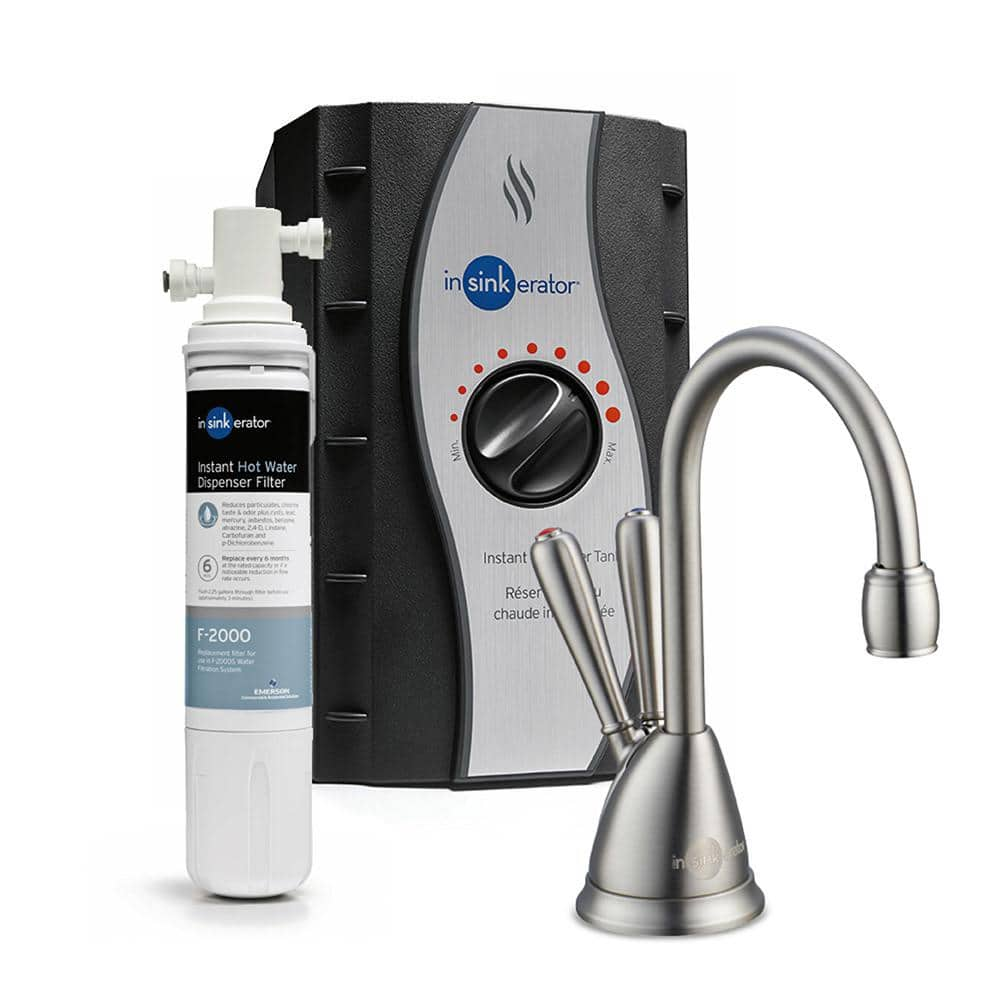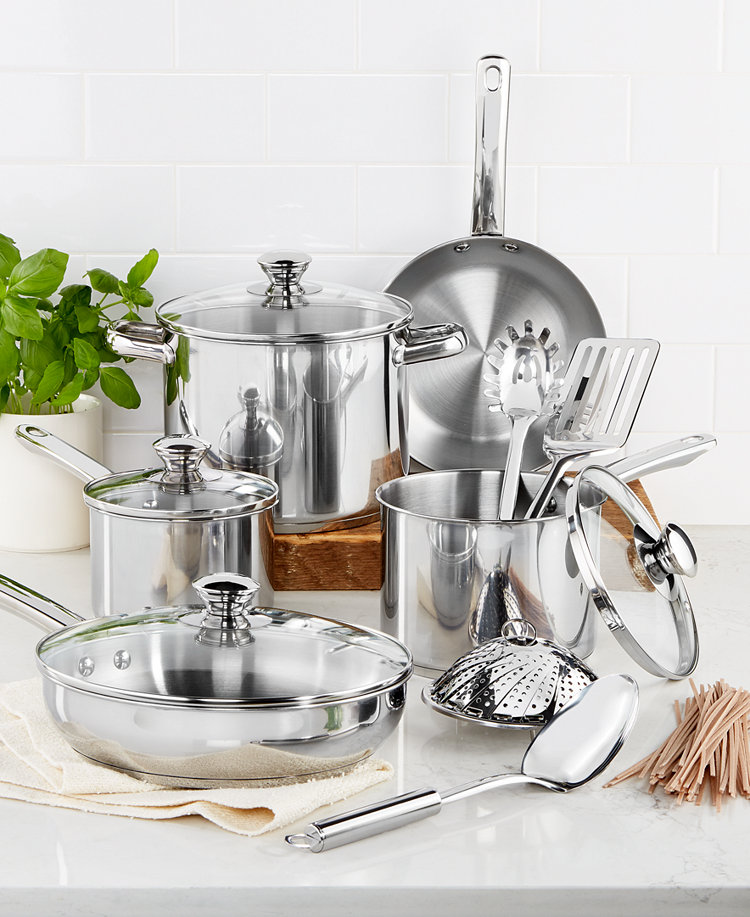InSinkErator Involve View Instant Hot & Cold Water Dispenser with Premium Filtration System & 2-Handle 6.75 in. Faucet in Satin Nickel
Includes Premium Filtration System & 2-Handle Fixed Faucet. 2/3 Gal. Tank with Adjustable Temperature (160°F – 210°F). Backed by our 3-Year “We Come to You” Limited In-Home Warranty.
The InSinkErator Involve HC-View Hot Water Dispenser delivers up to 60 cups of near-boiling & cool drinking water per hour to quickly prepare coffee, loosen tough foods, rinse utensils, or warm baby bottles. The contemporary dual-handle Satin Nickel faucet is designed for single-hole installation and features durable metal construction with a mid-arc, non-swivel spout. The F-2000S Premium Water Filtration System reduces particulates, chlorine taste and odor, plus cysts, lead, mercury, and other impurities for better-tasting hot beverages. It has a ¼ in. quick-connect fitting and is replaced easily without contact with used filter material.
- UL certified hot water tank with durable, stainless-steel construction delivers up to 60-cups of hot and cool per hour
- Includes an all metal, non-swivel, dual-handle faucet in a sleek satin nickel finish with hot and cold handles
- Designed for single-hole installation
- Includes a 2/3 Gal. stainless-steel tank with easily adjustable temperature control from 160°F up to 210°F
- Premium filtration system includes head bracket, one (1) F-1000 replacement filter, 2-polyethylene tubes and quick-connect fitting, 2-mounting screws, 1/4 in. compression fittings
- System has 500 Gal. filter capacity to reduce particulates, chlorine taste and odor plus cysts, lead, mercury, asbestos, benzene, atrazine, 2,4-D, lindane, carbofuran and p-dichlorobenzene, for clean-tasting water
- Twist-and-lock design for quick-and-easy filter changes and automatic water shut-off during cartridge replacement
- For optimal performance, replace water filtration cartridge every 6-months
- NSF standard 42 and 53 certified for quality assurance
- Automatic water shut-off during filter cartridge replacement
- Faucet and hot water tank backed by a 3-year we come to you limited service warranty to cover repair or replacement by an authorized dealer
- Filtration system is backed by a 1-year we come to you limited service warranty to cover repair or replacement by an authorized dealer
Additional information
| Connection size (in.) | 3/8 In. |
|---|---|
| Faucet Height (in.) | 6.75 |
| Spout Height (in.) | 6.75 |
| Certifications and Listings | UL Listed |
| Manufacturer Warranty | 3 year parts and in home service |






by Jessica
Works perfectly and easy to install.
by Wone
FYI-have to take off the food disposal in order to swap. Became two person job when re-attaching it to prevent the new flange from moving from ideal position, i.e. reading stamped letter right-side up. We will be careful with this one as the first one was cleaned roughly and the brown paint starting coming off and it wasn’t pleasant to look at. Also needed to re-calk, incase you are wondering.
by Melissa
The directions to install can be a bit clearer. The instructions for the initial installation and for replacing an existing filter are not clear. There should be instructions for both 1. Initial Installation 2. Replacing a filter.